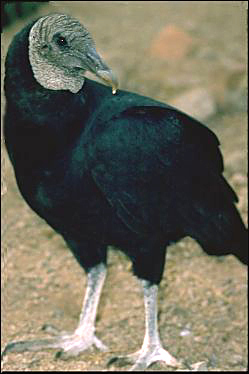
Deserts have a sense of timelessness not seen in other lands. Somehow, it's harder to visualize the land as different from today—as if the desert were eternal. Yet, those who study the desert's past are besieged by reminders that change here, as elsewhere, is the rule, not the exception.
Overhead, a silhouette traces lazy circles in the sky, wings unmoving, a Turkey Vulture riding the wind. But roll back time, and the Turkey Vulture is revealed as the invader who exiled the majestic, now-extinct Western Vulture from the northern desert. Or perhaps that too is time's illusion. Perhaps if we could follow that Western Vulture's retreat through time south into Mexico, we would see it slowly morph into the smaller, Black Vulture of today.
Voices from the past speak of change, but often are unsettlingly quiet
when it comes to details. Is today's Black Vulture a downsized Western Vulture
driven to the southern reaches of its kingdom—or a foul pretender to the dead
king's throne? 
Contributor: Arthur H. Harris, Laboratory for Environmental Biology, Centennial Museum, University of Texas at El Paso.
Desert Diary is a joint production of the Centennial Museum and KTEP National Public Radio at the University of Texas at El Paso.

A Black Vulture (Coragyps atratus). Image by Dr. Lloyd Glenn Ingles, ©California Academy of Sciences, 2001. </0>